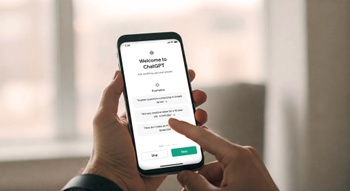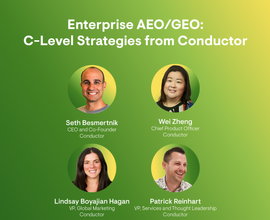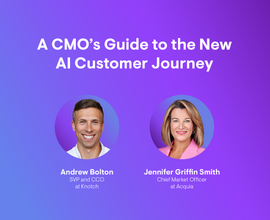Your "Direct" Mobile Traffic Might Be From ChatGPT
- Thought Leadership
- By Rachel Schardt
- 4 minutes read
Learn how attribution from the ChatGPT app and other LLM apps differs from web browsers and how you can shift your measurement strategy.
With the rise of Large Language Model (LLM) adoption, the question “Are we getting traffic from ChatGPT?” is probably being sent in a Teams chat near you almost every minute. You might have even set up dashboards to track referral traffic from these sources.
That’s a great start. But what if that data isn't telling the whole story?
Unlike clicks from web browsers, where referrer information is a standard part of the HTTP request, LLM apps like ChatGPT or Gemini mobile apps handle link navigation differently. LLM apps might not include this data, potentially leading to these sessions appearing as Direct Traffic instead.
The rise of LLM mobile apps
Think about how you interact with LLMs on your smartphone. Maybe you’re using your smartphone browser to access ChatGPT or Gemini, but more and more people are downloading and adopting these LLM apps. In fact, in March 2025, ChatGPT took the world’s #1 spot for most downloaded app (totaling about 46 million new downloads ).
When an LLM provides a link to a website and a user clicks on it from their mobile app, the attribution for that traffic often falls into the "direct" bucket in your analytics platform instead of the chatgpt.com / referral attribution you may be expecting. Why?
The attribution gap: Why LLM mobile traffic goes "Direct"
Unlike traditional web browsers, where referer information is typically passed along when a user clicks a link, most apps are not configured to do so.
Let’s break down how LLM traffic to your website gets assigned as direct / (none):
- ChatGPT generates a link: The LLM processes a user's query and provides a relevant link to your website.
- User clicks the link: The user taps the link within the app on their mobile device.
- Missing Referral Field: Due to the specific way the LLM app handles the click, the browser might not receive or pass on the information about where the user came from.
- Analytics assigns "Direct": Without referrer data, your analytics platform (like Google Analytics or Adobe Analytics) has no other source to attribute the visit to and therefore categorizes it as "direct" traffic.
The Implications for Marketers
This potential misattribution creates an inaccurate picture of your marketing efforts in a few ways:
- Underestimating LLMs as a source: You might be underrepresenting the role that LLMs are playing in driving traffic to your site. This could lead to missed opportunities to further optimize for these emerging channels.
- Inaccurate channel performance: Your understanding of which channels are truly driving growth could be skewed. "Direct" traffic might appear artificially high, while other traffic channels like organic appear low or seem to have steep year-over-year and quarter-over-quarter declines.
So, what can you do?
While a perfect solution to accurately track all LLM traffic might not exist yet, we recommend the following:
- Monitor trends in direct mobile traffic: Keep a close eye on any significant or unexplained spikes in your direct mobile traffic. Could these correlate with increased usage of LLM apps like ChatGPT?
- Explore advanced segmentation: Within your analytics platform, try to segment your mobile direct traffic further. Look for patterns in user behavior, landing pages, or conversion rates that might suggest a different origin. Excluding the homepage from this analysis can help you further ascertain what might not actually be “direct”.
- Stay informed: Keep up-to-date with potential changes in how LLM’s handle outbound links and attribution.
The future of attribution in the age of AI
As LLMs become even more integrated into our daily digital lives, the challenge of accurate traffic attribution will only become more complex. Marketing Leaders need to be proactive in understanding these shifts and adapting their measurement strategies accordingly.
The biggest opportunity is for siloed digital marketing teams to work together to drive overall site traffic, and recognizing that your "direct" mobile traffic might not be as direct as you think.







